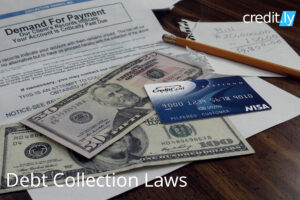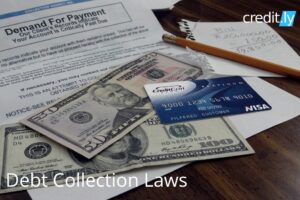Keeping your credit clean and up to date is one of the most important tasks you can do. If your credit is damages, your future finances will suffer. If You clean your house on a regular basis, and we hope you do, keeping your credit clean needs to be on the to-do list. The truth is that many people don’t regularly check their credit — and the dust bunnies building up on your credit report could be quite costly.
Fortunately, there are ways to brush up your credit file — and subsequently your credit scores. For instance, you can dispute any errors you find on your credit reports, identify your credit score killers and come up with a plan to address them. But before we break down how to clean up your credit report, let’s backtrack for a moment.
Wait … What’s In My Credit Report?
Your credit report is a record of your credit use. It contains information on most of your credit accounts. (Mortgages, credit cards, student loans or auto loans.) And includes your payment history, account balances, account type, credit history and credit inquiries, alongside some personal information.
Credit reports are important because most information on them is used to calculate your credit scores. And your credit permeates many facets of life. You probably already know that lenders will look at your credit scores when deciding whether to give you a loan and what interest rate they’ll charge. But insurance providers, cellphone companies, employers and even landlords check your credit before making business decisions.
Given how prevalent credit reports (and the scores derived from them) are during various life events, it’s important to make sure that the information on yours is accurate. Errors are more common than you may think. (A 2012 study from the Federal Trade Commission found that one in five Americans had an error on their credit reports.) So, too, unfortunately, is bad credit. Nearly a third of Americans have a credit score lower than 601 — the distinction between bad and fair credit on many scoring models — according to credit bureau Experian.
How Do I Start Repairing, Errors and Cleaning Up My Credit Reports?
Whether your credit is tarnished because of errors or some past missteps, there are steps you can take to clean up your credit report. Here’s how you can help put yourself back on a stellar credit track.
1. Pull Your Credit Reports and Obtain Your Credit Scores
The Fair Credit Reporting Act entitles you to a free credit report from each credit bureau every 12 months. It’s a good idea to pull a copy of your reports from each of the major credit reporting agencies If you’re aiming to ensure your credit report is spotless. (Equifax, Experian and TransUnion.) Financial firms don’t always report to all three. And you’ll want to make sure you catch all issues that are weighing your credit scores down. since most lenders won’t disclose which bureau they’ll use to pull your report when you apply for new credit. You can pull your credit reports for free each year by visiting AnnualCreditReport.com and you can see your credit scores for free on Credit.ly.
2. Go Through Your Credit Reports – Be Detailed Line by Line
It won’t make for the most thrilling read, but it’s important to go through each of your credit reports with a fine-tooth comb. You’ll want to make sure all the account information is accurate: Check loan status, account balances, your payment history, list of recent credit inquiries and so on and so forth.
You should also pay attention to your personal information. Things like your name and birthdate won’t be calculated into your credit scores. Or even affect your credit scores. But unfamiliar line items, like a wrong address, could signal something more nefarious like identity theft.
3. Dispute Errors No Matter How Big or Small
If you do find a mistake — like a late payment mark when you know you paid your creditor on time — you’ll want to file a formal dispute with the credit bureau in question. (Issues of identity theft should also be reported to your local authorities.) You can file disputes on your own online or by sending a letter to the agency in the mail. (Something to note: Even if the same error appears on all three of your credit reports, you’ll need to file three separate disputes over the item — one with each credit bureau.) Be sure to include any supporting documentation when you file your dispute.
If you’re having problems getting a dispute resolved or your credit report is riddled with errors you may want to consider hiring a professional. (Due to, for instance, a major problem like identity theft.) For instance: A good credit repair company will explain exactly what it can and cannot do on your behalf. And they will never guarantee specific results like “a perfect credit score in 30 days”. (That’s illegal.) You can learn more about disputing errors on your credit report.
How Do I Clean Up Past Credit Report Mistakes Fast?
This one can be a bit trickier: Outside of purging inaccurate information from your credit reports, cleaning up credit missteps you made in the past can take some time. It’s certainly a good idea to get any accounts you owe out of delinquency or collections. (And, in fact, scores may improve a bit shortly because of it — newer credit scoring models, for instance, treat paid collections differently than unpaid collections.) Still, it takes most negative information seven years to age completely off of your credit reports, with certain bankruptcies taking up to 10 years. (You can learn more about how long things stay on your credit report.)
In some circumstances, you may be able to avoid a blemish on your credit report. For instance: If your payment history was pristine prior to a single missed bill, you may be able to call your creditor. Or your issuer. And ask if they’ll skip reporting the misstep to the credit bureaus.
But, generally, once a negative item appears on your credit, it can be difficult to simply have it removed. For instance: Debt collectors have contracts with the credit reporting agencies that can prohibit pay for removals deals. And they’re typically not going to risk those relationships based on a goodwill request or to get paid on a single account.
Is There a Simple Way I Can Clean up My Credit Report Fast?
Well, there is one blemish, outside of errors, you can address in a timely fashion: high credit card balances. See, issuers report your balances about once a month, usually as of your statement billing date — and those balances heavily influence your credit utilization rate. That rate accounts for how much debt you’re carrying compared to your total available credit limit(s) and it’s the second most important factor when it comes to most credit scores. Translation? If you pay down high credit card balances (typically to at least 30% and ideally 10% of their credit limits), you could see an improvement in your score in about 30 to 60 days.
I Need Help, A Fresh Start on My Credit? Is There a Do Over Approach?
Here’s the good news: The effects of negative information on your credit scores will lessen over time. (Basically, the further away from the original delinquency date you get, the lower the impact.) As you wait for your scores to rebound, focus on establishing smart spending habits. For instance, pay off (and keep down) those high credit card balances. You can also look into taking out a secured credit card or credit-builder loan to reestablish a good payment history. Review your budget to look for extra dollars that could potentially be put towards paying down your debts. A deep dive into your finances could help you identify and fix the issues that were causing you to miss payments or run up big loan balances in the first place.
And, of course, you can build and maintain good credit in the long-term. Do this by making all loan payments on time. Keeping debts low. And adding a mix of accounts (kept in good standing). As your credit reports freshen up and your credit scores rebound. (Remember, below ideally 10% and at least 30% of your total available credit limits.)
Need more info on the ins and outs of credit, Creditly offers a free resource page to keep you busy!
[/et_pb_text][/et_pb_column][/et_pb_row][/et_pb_section]









